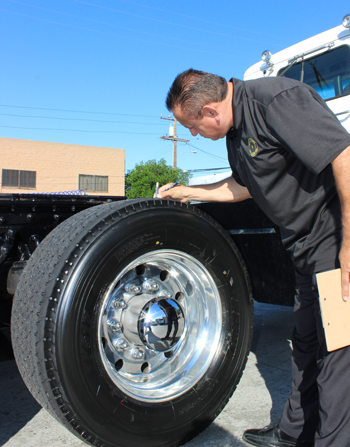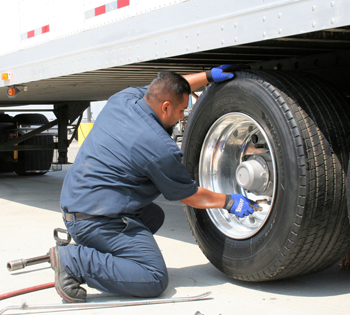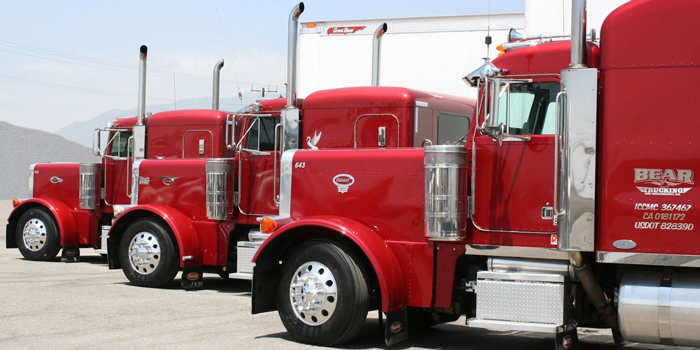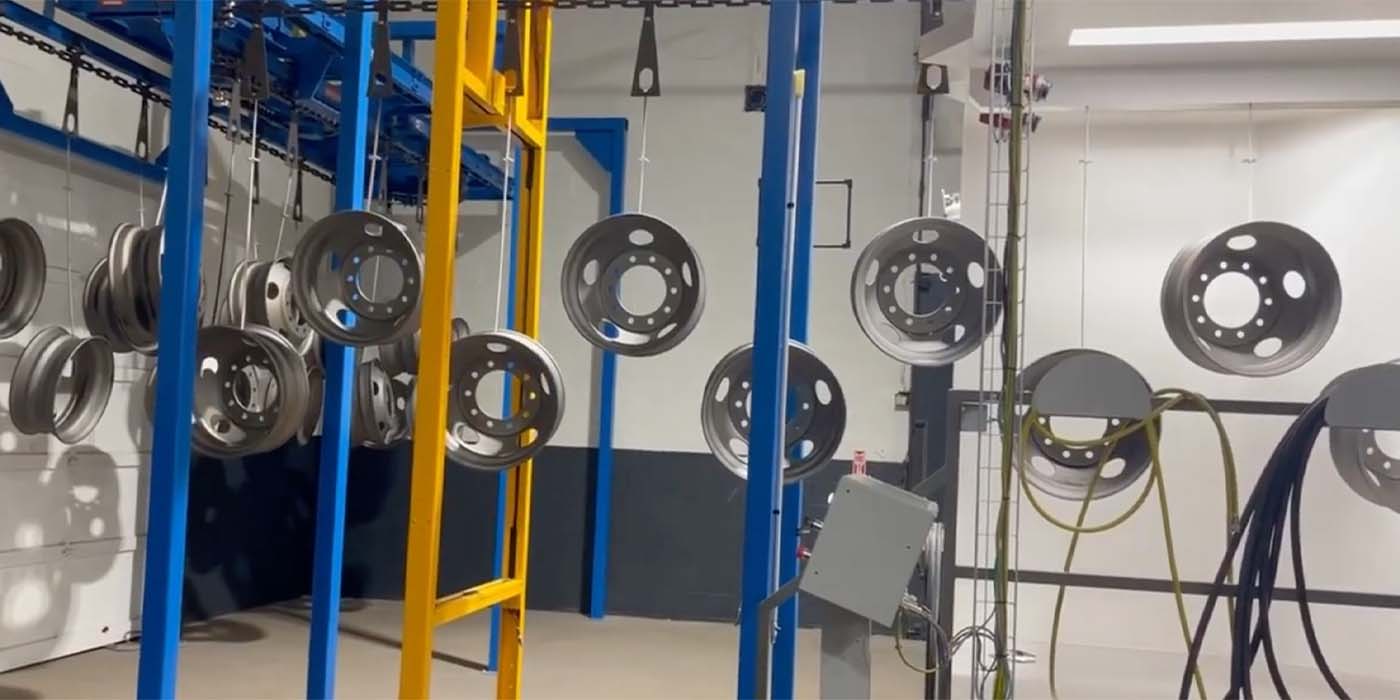Wide base tires are an investment, but they can pay off in the long run for fleets looking to haul heavy loads and save weight. While these benefits are very appealing to fleets, tire dealers need to help their customers determine if wide base tires are just what the doctor ordered.
The biggest difference between your standard dual tires and wide base singles is obvious: size. Wide base tires have a much wider contact patch and are significantly larger than your standard truck tire, which allows fleets to use one tire rather than a dual configuration.
“Wide base tires get their name because they are typically wider than what is used on a normal over the road tractor trailer combination,” says Sanjay Nayakwadi, product strategy director for Bridgestone Americas’ commercial group. “The most common sizes are 385/65R22.5, 425/65R22.5 and 445/65R22.5. These tires are larger to accommodate the higher load capacities.”
Benefits
Yokohama Tire Corp.’s Rick Phillips, vice president of sales, adds that one wide base tire can typically carry as much weight as two dual tires, but will weigh less and use less fuel, leading to weight savings and fuel savings. However, fuel savings can be harder to recognize as it is minimal compared to premium, fuel efficient duals.

While fuel savings and weight savings are a major benefit of wide base tires, Phillips adds that wide base tires also provide a lower center of gravity, which in turn makes the vehicle more stable.
Another safety advantage of wide base tires is simply that maintenance checks become easier as there are less tires to inspect and there is no pesky inside dual.
“There are fewer tires to mount, dismount, inspect or rotate, resulting in less maintenance and downtime – so it has eliminated the need for hundreds of thousands of pressure checks and rotations,” says Paul Crehan, director of product marketing for Michelin North America’s truck tire division. “Another factor is the ease of air pressure maintenance and pre-trip inspections. The majority of rapid air loss situations stem from poor pressure maintenance on the inside dual tire – a problem that is eliminated when switching to wide single tires. The need to get to and check that more difficult inside dual tire is eliminated.”
But, because fleets using wide base tires no longer have another tire beside it to help if the tire fails, maintenance is even more important when using wide base tires and mounting and balancing such a large tire can often be a challenge for dealers, Yokohama’s Phillips adds.
To make sure dealers are properly maintaining the tires, Michelin’s Crehan says they need to manage employee turnover to ensure their employees have the proper skills to service wide base tires.
“The dealer should be reputable, trained, have experience with wide base tires and retreads, and focused on quality,” Crehan notes. “Fleets new to wide base singles should recognize the importance of training the staff and remaining current with the training. These wide base singles are obviously larger, heavier and represent twice the value of a dual.”
Wide Base Applications

Wide base tires are typically used in steer position for on/off road applications for concrete mixers, dump trucks and waste/refuse vehicles.
“They were originally developed to run on steer axles of working trucks like cement mixers with very heavy front axles that a standard profile tire couldn’t carry,” Phillips notes. “The technology has been developed over the years and has evolved into the ultra wide base category, with a lower profile, and is used in drive and trailer positions.”
Bridgestone’s Nayakwadi notes that the main application difference between wide base and ultra wide, often called super wide, is the road. “Although ultra wides are being used in more and more applications, wide base tires are typically used in on/off road applications, while the ultra wides are predominately used in on-highway applications such as tractor trailers,” he explains.
Making the switch from dual commercial truck tires to wide base singles isn’t for every fleet, but depending on what applications a fleet operates in, wide base tires could be the right tire.
“As with any tire, there are wide base tires that range from rib type to aggressive lug patterns,” says Nayakwadi. “Determining the level of traction needed is important in choosing which tire will perform best. The time spent on road versus off road also is a key factor in choosing the right tire, as there may be trade offs in traction versus treadwear.”
Retreading
Retreading wide base tires has significantly improved since the tires were introduced.
According to Bridgestone’s Nayakwadi, there are many retread patterns designed for wide base tires and fleets that can successfully use retreads as a major part of their tire programs.
“Retreadability will depend on the application and the maintenance,” adds Yokohama’s Phillips. “There are some lower tier products that are not good candidates for retreading, but most of the premium products retread quite well and extend the service life of the product.”
When managed properly, fleets can save a lot of money using retreads rather than completely replacing the tire.
“Cost is a significant advantage of retreading and the reason they have been popular for many years,” Michelin’s Crehan adds. “There are many different types and quality of retreads now available. The retread processes and products have significantly advanced during the last 20-25 years and deliver measurable value to fleet customers.”
Just like selecting a wide base tire, fleets will have different requirements in a retread, Crehan notes.
“It depends on the fleet’s type of operation, casing management, turnaround time, needs, availability of the necessary product, level of dealer service, on-line reporting needs, and fleet location,” he says. “In the long run, retreads offer excellent mobility solutions that can lead to cost savings and environmental benefits.”














